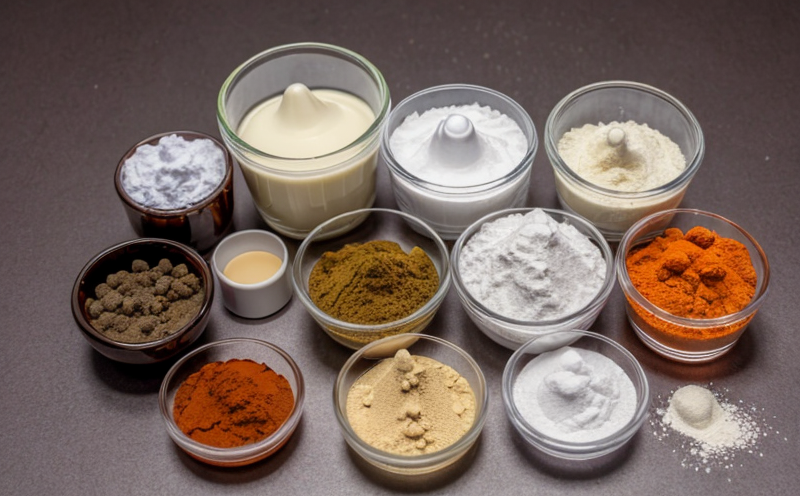Angle of Repose Flowability Testing
The angle of repose is a critical parameter in pharmaceutical testing, especially when dealing with excipients and formulation ingredients. It provides an essential understanding of the bulk properties of these materials, particularly their flow characteristics. This test is crucial for ensuring product quality, safety, and efficient manufacturing processes.
The angle of repose, or natural angle of repose, is the steepest angle at which granules or powders can rest on a plane without sliding down. This angle helps in predicting how materials will behave during processing and packaging stages. For pharmaceutical applications, this information is vital for ensuring that excipients and formulation ingredients flow properly through manufacturing equipment such as blenders, filling machines, and tablets presses.
The testing process involves constructing a pile of the material from which the angle of repose can be measured. The instrument used to perform this test typically consists of a cylindrical container with a conical bottom that is filled with the sample until it reaches the point where gravity causes the material to slide down the sides forming an angle.
In pharmaceutical quality management, understanding the flowability of excipients and formulation ingredients is paramount. Poor flowability can lead to issues such as caking, bridging, and segregation within bulk materials storage silos or during processing operations. These problems not only affect product quality but also increase production costs due to increased maintenance requirements and potential downtime.
Compliance officers must ensure that all tests conducted meet international standards like ISO 3586:2014, which provides guidance on determining the angle of repose for granular materials. Meeting these standards is crucial for maintaining regulatory compliance and ensuring product integrity across various markets.
R&D engineers rely heavily on accurate flowability data when designing new formulations or optimizing existing ones. By knowing precisely how different excipients interact with one another in terms of their flow properties, they can make informed decisions about ingredient selection that optimize both performance and cost-efficiency.
For procurement teams, understanding the flow characteristics of raw materials early on is equally important. It allows them to source appropriate suppliers who provide quality products consistently meeting required specifications regarding flow behavior.
International Acceptance and Recognition
The angle of repose has gained significant acceptance across numerous industries, including pharmaceuticals, due to its importance in material handling processes. This metric is widely recognized by organizations worldwide for its role in ensuring proper flowability of bulk powders.
ISO 3586:2014 remains one of the most authoritative standards governing this type of testing. Its adoption ensures uniformity and consistency in measuring angles across different laboratories globally, thereby facilitating better communication between manufacturers and regulatory bodies.
The USP (United States Pharmacopeia) also incorporates angle of repose into its specifications for certain excipients used in pharmaceutical manufacturing processes. Compliance with these requirements helps drug manufacturers ensure that their products meet strict quality control standards set forth by regulatory authorities like the FDA.
Similarly, European Union directives emphasize the significance of flowability measurements through angles of repose when evaluating new drugs or reformulating existing ones. This approach guarantees that all EU member states adhere to consistent criteria for assessing bulk powders before they enter commercial distribution channels.
Environmental and Sustainability Contributions
The testing of angles of repose plays a crucial role in promoting sustainable practices within the pharmaceutical industry. By ensuring that materials flow efficiently, manufacturers can reduce energy consumption during production processes by minimizing waste generated from blocked feeders or poorly functioning machinery.
Efficient flow also reduces material loss associated with bridging effects, which occurs when powders form arches inside storage containers preventing access to the underlying bulk. Such losses translate into increased operational costs but more importantly, they contribute negatively towards resource depletion if not addressed properly.
Incorporating sustainable practices such as optimizing flowability tests early in product development cycles can lead to significant reductions in environmental impact throughout a drug's lifecycle from raw material extraction through disposal after use. Manufacturers who adopt these approaches demonstrate their commitment to reducing overall carbon footprints while simultaneously enhancing product quality and customer satisfaction.
Competitive Advantage and Market Impact
The ability to accurately measure the angle of repose provides a competitive edge for pharmaceutical companies. By leveraging this information effectively, firms can improve their supply chain efficiency by minimizing bottlenecks caused by poor flowability leading to reduced downtime and increased productivity.
Moreover, companies that invest in advanced testing techniques like laser granulometry alongside traditional angle of repose measurements gain deeper insights into particle morphology affecting overall material behavior. This knowledge allows them to innovate faster responding more effectively to market demands for novel formulations or improved versions of existing products.
Achieving high standards for angle of repose testing also enhances a company’s reputation among consumers and healthcare providers alike who increasingly value transparency regarding the quality and safety of medications they consume. Demonstrating rigorous adherence to international norms builds trust while differentiating your offerings favorably against competitors lacking comparable certifications or practices.





